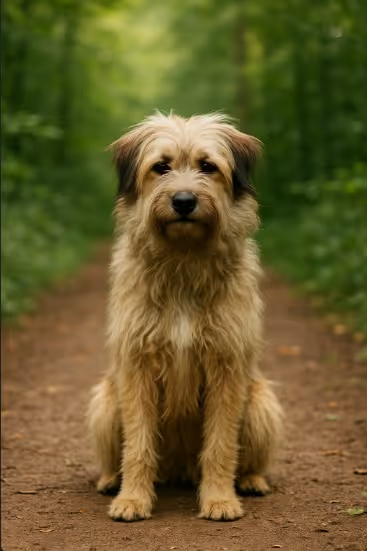The Pyrenean Shepherd (Berger des Pyrénées) is a small, high-octane herding dog from the French Pyrenees, famed for its quick wits, cat-like agility, and deep loyalty. Often partnered historically with Great Pyrenees to manage flocks, “Pyr Sheps” are spirited, sensitive, and intensely people-focused. They excel in agility, herding, flyball, and obedience, and suit active owners seeking a compact performance partner and devoted companion.

Born in the rugged French Pyrenees, the Pyrenean Shepherd has worked sheep for centuries. Small, fast, and tireless, they zipped around flocks while larger guardians deterred predators. Formal breed development and written standards emerged in France in the early 20th century; the breed later spread to performance circles worldwide thanks to its phenomenal athleticism and biddability. Today, Pyrenean Shepherds thrive as versatile sport dogs and devoted family companions while retaining keen herding instinct.
A lean, sinewy, quick-moving herder available in two coat varieties (Rough-Faced and Smooth-Faced).
Moderate maintenance focused on keeping the coat free of tangles and debris.
Built for speed and stamina—this is an athlete in a compact frame.
Brilliant, sensitive, and eager—responds to upbeat, varied sessions.
Fuel the athlete while keeping a lean silhouette.
Generally robust, with a long working lifespan, but screening is wise.
Find preservation breeders who prove health and working aptitude—or consider sport-savvy rescues.
Are Pyrenean Shepherds good apartment dogs?
With serious daily exercise and training, yes—otherwise their energy and voice can overwhelm small spaces.
Do Pyrenean Shepherds shed a lot?
Moderately year-round, heavier seasonally; Rough-Faced coats trap loose hair until brushed.
How much exercise does a Pyrenean Shepherd need?
Plan on 60–90 minutes daily plus brain work (tricks, scent games, agility drills).
Are Pyrenean Shepherds good with kids and other pets?
They’re affectionate with family; early socialization is key. Herding nips at heels can occur—teach boundaries.
Are Pyrenean Shepherds easy to train?
Very—provided training is upbeat, varied, and fair. They dislike harsh methods and boring repetition.
Do Pyrenean Shepherds bark a lot?
They’re alert communicators. Teach a reliable “quiet” and give outlets for energy to reduce nuisance barking.
Are Pyrenean Shepherds hypoallergenic?
No.
Can a first-time owner handle a Pyrenean Shepherd?
Yes, if committed to daily activity, classes, and enrichment; they’re intense compared with many companion breeds.